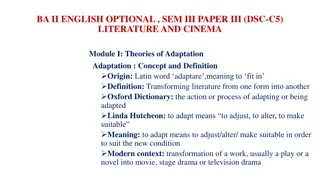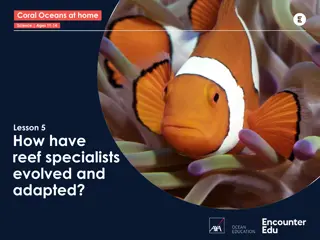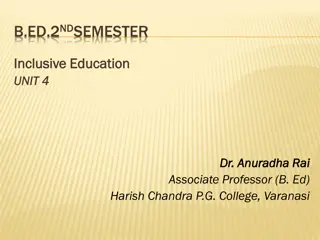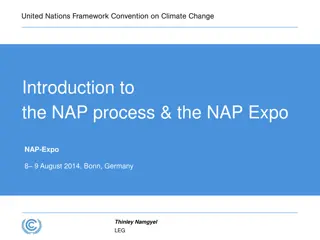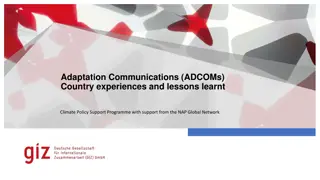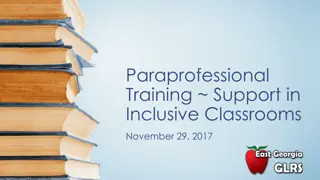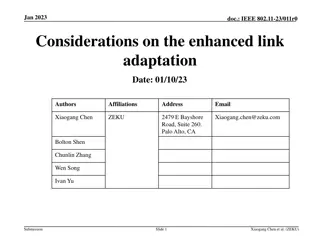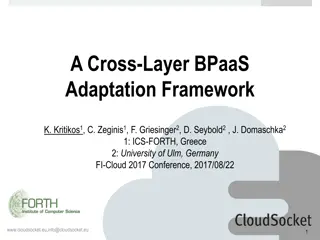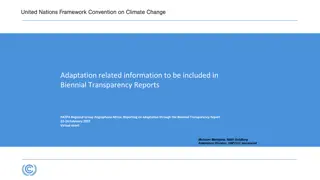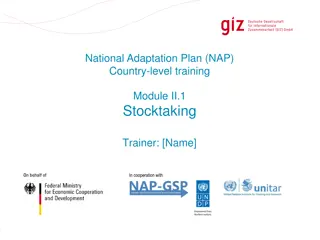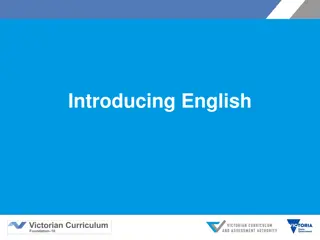Enhancing Inclusive Education through Curriculum Adaptation and Classroom Management
Inclusive classrooms welcome all students, regardless of abilities, and prioritize holistic support to meet diverse academic, social, and emotional needs. Effective classroom management involves creating an inclusive environment, considering cultural differences, establishing structure, and providing necessary support. Curriculum adaptation is crucial for addressing individual learning requirements and fostering participation and success. By modifying, substituting, omitting, and compensating, schools can enable collaborative learning and empower every student to reach their potential. Universal learning design principles promote accessible instruction and active engagement for all learners, including those with special needs.
- Inclusive education
- Classroom management
- Curriculum adaptation
- Universal learning design
- Student diversity
Download Presentation

Please find below an Image/Link to download the presentation.
The content on the website is provided AS IS for your information and personal use only. It may not be sold, licensed, or shared on other websites without obtaining consent from the author. Download presentation by click this link. If you encounter any issues during the download, it is possible that the publisher has removed the file from their server.
E N D
Presentation Transcript
An inclusive classroom is a classroom in which all students , irrespective of their abilities or skills ; are welcomed holistically. In inclusive classroom students with and without learning differences learn together. In inclusive classroom welcoming and support the diverse academic , social , emotional and communication needs of all students. Classroom management & organization is very important part of Inclusive Education .Classroom management should be successive by 1. Creating inclusive environment. 2. Considering cultural and learning differences in the classroom. 3. Focusing on structure and routine. 4.Proper classroom design. 5. Providing appropriate teaching aids. 6. Evaluate properly. 7.Positive Behavioural supports.
Curriculum adaptation is an ongoing dynamic process that modifies and adapts the prescribed program of studies to meet the learning requirements of a students with special needs. It enable the teachers to welcome learners of all abilities and ensure that every student is challenged to learn. Curriculum adaptation is needed in very part in the student s day.Learning socializing , independent and socity are assured for the student when all the school staff are aware of their teaching roles in the classroom. In Inclusive Education curriculum adaptation is necessary because , it 1. Increase person s participation and success. 2. Adapt on individual basis. 3. Adapt for congrnence. 4. Adapt for availability.
Ross said, The effective curriculum will be one which not only allows for the differences but which also enables each pupil to reach his or her potential through o process of collaborative learning .Schools which endeavour to create a climate suitable for inclusion , need to achieve a curriculum balance. By four way the curriculum adaptation process should be completed : Modification Substitution Omission Compersation 1) 2) 3) 4)
In approaches tom teaching that consider the diverse needs and backgrounds of all students to create learning environment where all students have equal access to learn. inclusive classroom teaching describes the range of In Inclusive classroom universal learning design is a important tool for the proactive planning of engaging accessible lessons in today s diverse dclassrooms.ULD principles that are REPRESENTATION , EXPRESSION , ENGAGEMENT to help educators accessible instruction that will increase the participation of all learners including those special needs. focuses on three core develop motivating ,
The Teaching Learning materials should enhance the learning skills of the children with disability focusing on their specific needs. Teaching Learning materials should encourage contacts between students and faculty, develop reciprocity & cooperation, and encourage active learning, prompt feedback, emphasize time on task, communicate high expectation and should respect diversity of talent and learning in students. The Teaching Learning material used should not only be appropriate according to the need of the child but also according to: ~ Child s IQ level, ~ Chronological age, ~ Sex, ~ Culture, ~ Family background etc.
Most often classroom teaching is dominated by the lecture method of teacher. Except some essential aids like chalk, duster, blackboard, teaching learning materials are hardly used in the classroom. Then used it may not be context- specific. One of the major aims of NCF (2005) is designing, providing for, and enabling appropriate teaching-learning systems that could realize the identified goals. Learning has shifted from Response Strengthening to Knowledge Acquisition to Construction of Knowledge. In this context, the duty of the teacher is to provide appropriate environment where the child will construct his knowledge by interacting with his physical and social environment.
A. Speech and Hearing Impairment 1. Sound discrimination toys (loud to refined) 2. Group hearing aids 3. Individual hearing aids 4. Audiometer with all accessories 5. Speech trainer with all accessories 6. Charts slides on sign language 7. Manual alphabet 8. Model of speech and hearing mechanism 9. Slides, charts on defects/deformities of speech and hearing impairments 10. Charts/Slides on speech articulation/felt cut outs in English and in any other regional language. 11. Speech correction exercises available at All India Speech and Hearing Institute, Mysore. 12. Mirror for speech correction.
B.Visual Impairment 1. Braille alphabet English/Any other regional language. 2. Snellen charts required for eye check ups. 3. Braille kit including abacus, stylus slate, taylor frame, etc. embossed tape rubber sheets, push pins. 4. Mobility cane, blind folder. 5. Charts on mobility skills. 6. Magnifying glasses plastic-based focusable, cylindrical magnifier, hand magnifiers, rectangular readers, etc. 7. Reading and writing stand with Braille marker. 8. Talking books. 9. Touch and audio learning material. 10. Model on eye mechanism. 11. Slides charts on eye defects and deformity. 12. Typewriter with Braille marker. 13. Thermoform machines.
C.Orthopaedic Impairment 1. Charts/Model/Slides on upper and lower body impairment. 2. Slides on techniques of physiotherapy. 3. Purchase prosthetic aids, wheel chairs, Braces, hand rails, adjustable furniture, thick pencil holder, book stands and page turner, etc. 4. Artificial limbs. 5. Slides on the diseases and correction related to orthopaedic impairment. D.Mental Retardation 1. Psychological tests used for testing. 2. Model of brain. 3. Charts/Slides on left and right hemisphere functioning and problems related to mental retardation. 4. Slides on mentally retarded (mild to severe) Adaptive behaviours in relation to intellectual functioning (NIMH, Secunderabad). E. Learning Disability 1. Tests used for assessment. 2. Charts/Slides on basic areas of learning disability- perceptual, reading, writing, arithmetic, listening and comprehension. 3. Charts/Slides on mistakes done by children. 4. Toys games, any other material used for correction of these problems. 5. Sand trays
1.Creating an inclusive schools Dr. Piku Chowdhury 2.https://medinclusiveeducation.weebly.com/preparation-of- tlm.html 3. http://schoolofeducators.com/2012/03/school-equipments-for- children-with-special-needs/




